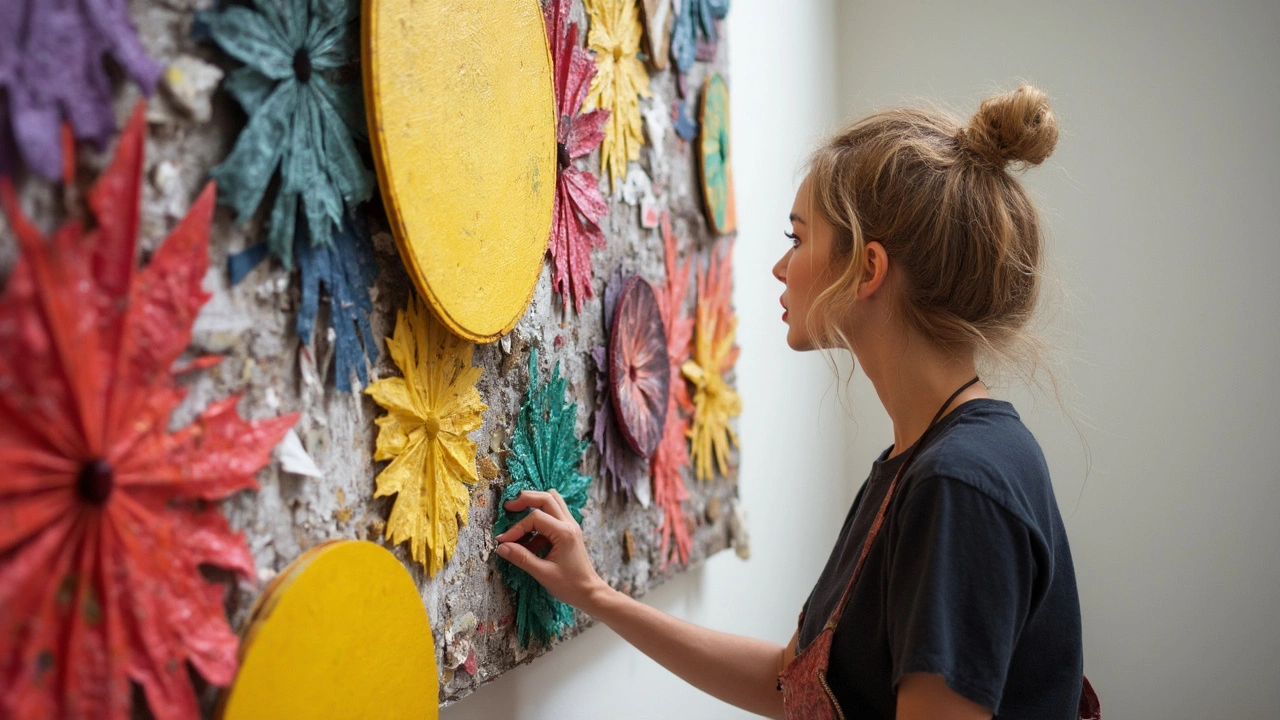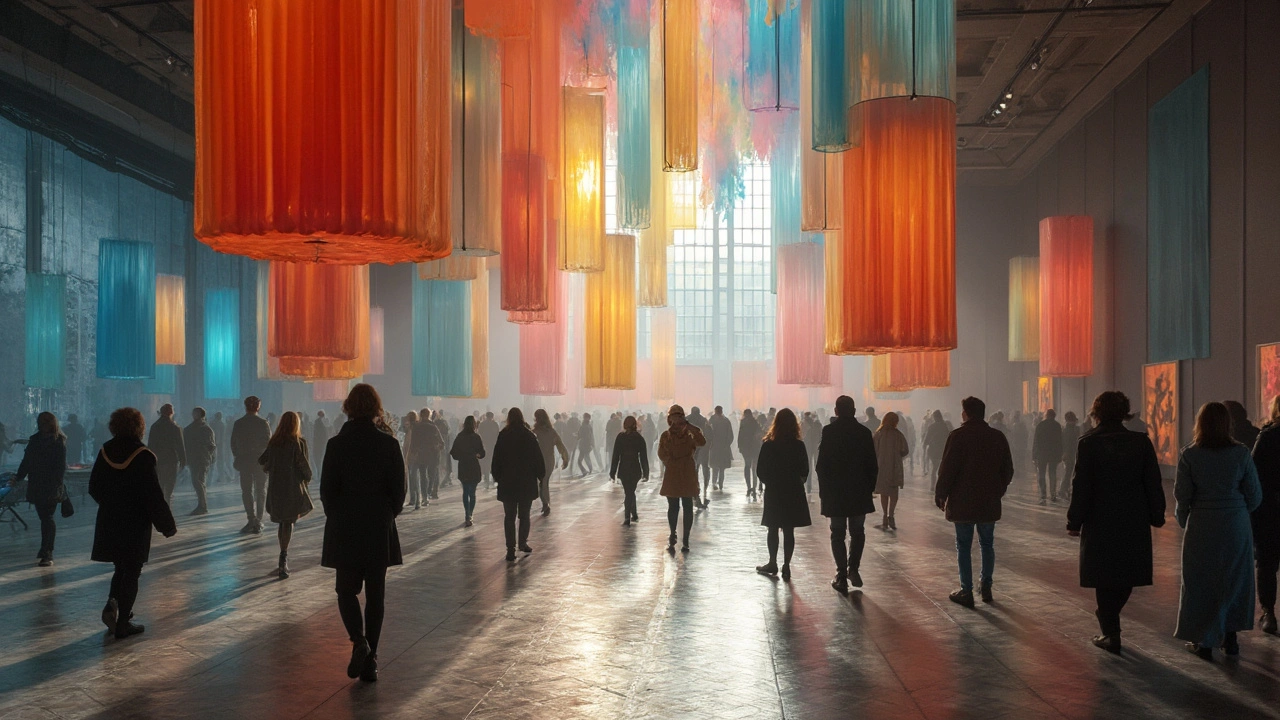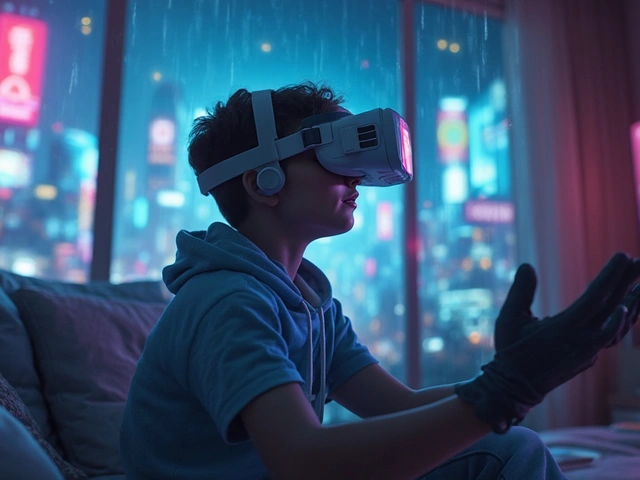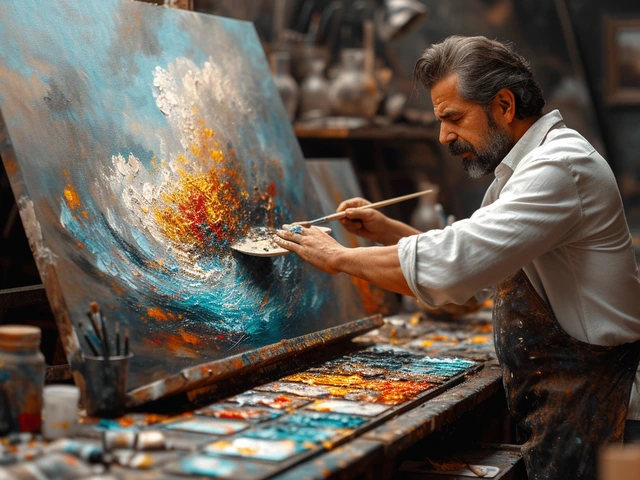If you've ever walked into a room where art takes over the entire space, chances are you've stumbled into an installation. Unlike paintings or sculptures you just look at from a distance, installation art pulls you in. You're not just a viewer — you're part of the setup. That's what makes installations so wild and memorable.
It's all about how things look and feel, sure, but there's always more going on beneath the surface. Artists use everyday objects, light, sound, or even empty space to get their message across, and sometimes their choices seem random—until you slow down and start piecing it together.
Let's face it, figuring out why a pile of blinking TVs or a maze of hanging wires feels so powerful isn't always easy. But understanding the basics — what grabs your eye, what stirs up a feeling, and how the message pokes at your brain — makes it a whole lot more fun and way less confusing.
- What Makes an Installation Visually Striking?
- Finding Meaning: Symbols in Installation Art
- Materials and Space: Building the Experience
- Audience Engagement: More Than Just Viewing
- Tips for Experiencing and Creating Installations
What Makes an Installation Visually Striking?
When you walk into a space transformed by installation art, your senses kick in before your brain does. What makes you stop, look, and feel drawn in? It's usually a mix of bold choices with color, materials, scale, and how everything is placed around you. Big, unexpected objects or wild combinations catch your eye. Imagine standing in Yayoi Kusama's Infinity Mirror Rooms, where lights and mirrors make you feel like you're in another universe. That's deliberate — artists use these tricks to mess with your expectations.
Colors matter too. James Turrell plays with light to wash entire rooms in bold blues, reds, or pinks. He once said,
"You are not looking at the light, you are looking at the thing the light is doing."
Different shades set the mood, from peaceful to chaotic. Placement is also huge. Richard Serra’s gigantic steel arcs force you to wind through narrow paths, which makes you notice the space and your reaction to it.
Here's where things get interesting: It's not just what you see, but how your body responds. Some installations use sound, texture, or even temperature to grab your attention. Olafur Eliasson’s Weather Project at Tate Modern drew 2 million people, mostly because a foggy sun took over a whole massive hall and made everyone feel a weird mix of awe and wonder.
Check out these features that usually make an installation pop:
- Scale: Big or tiny, it surprises your senses.
- Materials: Anything from old TVs to water, plastic, or live plants.
- Color and Light: Sets the mood instantly.
- Movement and Sound: Makes you want to stay longer, pay attention.
- Placement: How things are set up changes your path and view.
Here’s a quick look at how these elements show up in famous works:
| Artist | Work | Key Visual Element | Impact |
|---|---|---|---|
| Yayoi Kusama | Infinity Mirror Rooms | Mirrors, Lights | Sensory overload, feels endless |
| James Turrell | Skyspaces | Colored Light | Calm, shifts your view of space |
| Richard Serra | Dia:Beacon Torqued Ellipses | Large Steel Forms | Makes you feel small, changes your path |
| Olafur Eliasson | The Weather Project | Lights, Fog, Mirrors | Immersive, changes atmosphere |
If you’re thinking about creating an installation yourself, focus on just one or two of these features to start. Go big with color, or play with space in a way that forces people to move differently. The trick is making people stop, react, and want to look closer.
Finding Meaning: Symbols in Installation Art
That weird feeling you get standing inside a room full of scattered shoes or flickering lights? Most of that comes down to symbolism. Artists don’t just pick random objects—they’re telling stories or sharing opinions through things you might not expect. Sometimes, it’s super obvious, like a flag made from recycled plastic to talk about pollution. Other times, it makes you squint and wonder, “What’s going on here?”
Take Yayoi Kusama’s ‘Infinity Mirror Rooms.’ Those endless dots and reflections aren’t just there to look cool; they point to ideas about being lost or overwhelmed—both mentally and emotionally. Or think of Ai Weiwei’s ‘Sunflower Seeds’ installation at the Tate Modern. He filled a whole hall with over 100 million handmade porcelain seeds. That wasn’t just about the seeds themselves; it’s a comment on mass production in China and every single seed stands for a worker or a person lost in the crowd.
There are common symbols that pop up a lot in installation art. Here’s a quick list so you know what to look for next time you’re at a show:
- Mirrors: Often about self-image, truth, or seeing things differently.
- Everyday objects (like clothes or dishes): Used to make you rethink daily life or childhood memories.
- Light and shadow: Can represent hope, fear, the passage of time, or the unknown.
- Natural materials (soil, plants): Usually talk about the environment or our connection to earth.
- Sound: Not just background noise—sometimes it’s a memory trigger or part of the story.
What’s cool is how much this stuff grabs people’s attention. According to visitor surveys from big museums like the Tate Modern, installations with clear symbols get 40% longer viewing times on average than works with no obvious story. Here’s a stats table to give you the lowdown:
| Symbol Type | Average Viewing Time (minutes) | Visitor Engagement (%) |
|---|---|---|
| Recognizable Symbols (e.g., flags, mirrors) | 7.5 | 82 |
| Abstract Installations | 4.3 | 57 |
If you want to “read” an installation, start by paying attention to anything that feels familiar or out of place. Ask yourself what that object usually means in real life—then think about why it’s here, in this context. This method works whether you’re walking through a famous exhibit or someone’s garage project.

Materials and Space: Building the Experience
In installation art, the stuff artists use—whether it’s neon tubes, piles of dirt, video screens, or recycled plastic—isn’t random. The choice of materials tells its own story. For example, Yayoi Kusama’s endless dots and soft sculptures use mirrors and polka dots to mess with your sense of space, making you feel like you’re floating inside her mind. Or take Ai Weiwei and his installations using Lego blocks or sunflower seeds, which talk about mass production and individuality just through the materials alone.
The space is just as important as the objects. Sometimes the artwork fills every corner of a room, like James Turrell’s light-filled chambers that make walls disappear. Other times, artists leave huge gaps, forcing you to notice silence or emptiness, like in Rachel Whiteread’s concrete household casts. Where you walk and where you pause aren’t afterthoughts—they’re part of the experience.
If you’re thinking of making your own installation, here are a few things to keep in mind:
- Test your materials. Some stuff looks cool in your head but falls apart once you set it up. Lots of artists do mock-ups first.
- Think about the space. Natural light, background noise, and even the smell of a place change how people feel inside your setup.
- Guide your viewer. Pathways, obstacles, and hidden corners decide how people move and what they notice.
The trick is to make the space and the objects work together. When that happens, the whole thing becomes way more immersive. And honestly, when you nail the right combo, you can make people feel like they’ve stepped into another world—even if they’re just inside a warehouse or a subway station.
Audience Engagement: More Than Just Viewing
Ever noticed how with installation art, you’re not just standing and staring? A lot of famous installations invite you in—literally. In Yayoi Kusama’s Infinity Mirror Rooms, for example, people actually walk inside, get surrounded by an endless reflection of lights, and become part of the art itself. That’s a big deal: you’re not just a viewer, you’re a participant.
This isn’t by accident. Artists use tricks like sound, movement, touch, and even the layout of a space to pull you deeper in. During James Turrell’s light installation shows, people hang out for ages because the shifting lights mess with your sense of time and space. Some works react when you get close, or change based on how many people are in the room. Rafael Lozano-Hemmer’s interactive pieces, for example, use heartbeat sensors and microphones so the art changes based on your presence.
Why go to all that trouble? Well, when you’re inside an installation, your reactions actually finish the artwork. The piece comes alive with your footsteps, your thoughts, maybe even your selfies. It’s a two-way street: the art shapes how you feel, and you, just by being there, shape the art.
If you want to get the most out of these experiences, try these tips:
- Don’t rush—spend some time in the space. The best moments happen when you relax and look around.
- Interact when you can. Touch what’s meant to be touched, move where you’re allowed to move.
- Think about how you feel—are you unsettled, curious, excited? That reaction is part of the meaning behind the work.
- If possible, see how other people react. Sometimes watching someone else interact with the piece gives you a whole new perspective.
So next time you step into an installation, know that you’re as important as the art. It’s about what the space does to you—and what you do inside that space.

Tips for Experiencing and Creating Installations
Walking into an installation art space can be pretty intense if you’re not sure what to look for. Don’t just breeze through—take your time. You’ll get a much more interesting experience if you slow down and let each element sink in.
- Explore every angle: Don’t just stand in one spot. Walk around, crouch down, or look up. Installations are built to change as you move.
- Look for patterns: Artists love repeating shapes, colors, or sounds for a reason. Try to spot any patterns—that’s often where meaning hides.
- Check the materials: Take a close look at what things are made of. Sometimes, artists use weird or common stuff you wouldn’t expect. That’s usually a big clue to what they’re saying.
- Ask about interaction: If it’s not clear, don’t be shy—ask. Some installations invite you to touch, move, or even add something yourself.
- Read the notes: Most galleries put up a description or artist statement. Those aren’t just for show; they can reveal the thinking behind the piece.
If you’re itching to create your own, here are some basics to get you started:
- Pick a big idea: Start with one clear message or question you want people to wrestle with.
- Think about the space: Scout your area—dimensions, lighting, even smells. Each bit of the setting changes the effect.
- Choose your materials with purpose: Don’t grab random stuff. Every material can carry meaning, so decide what tells your story best.
- Plan the pathway: Sketch out how someone might move through your work. Guide them without forcing it.
- Test and tweak: After setting up, invite friends or strangers in. Watch how they react and be ready to tweak the setup for max impact.
Here’s a quick look at what draws people most to installations, based on a big 2023 global survey of museum-goers:
| Element | % of Visitors Engaged |
|---|---|
| Immersive Environments | 76% |
| Interactive Components | 59% |
| Unusual Materials | 51% |
| Emotional Impact | 67% |
Remember, the key to both enjoying and making installation art is to get involved. There are no wrong questions, no perfect way to engage. Just jump in, notice what grabs you, and don’t overthink it. Art’s best when it surprises you.



